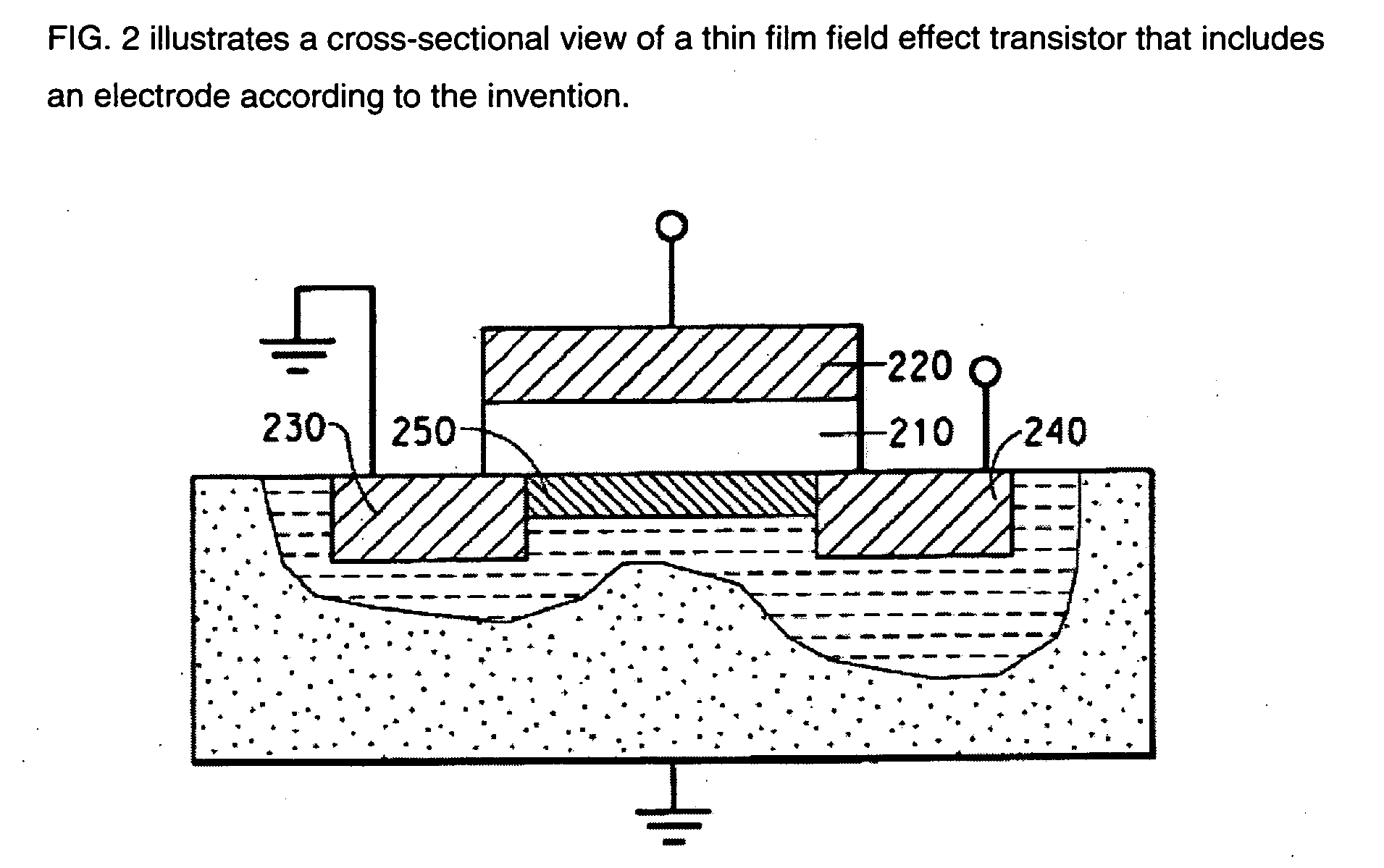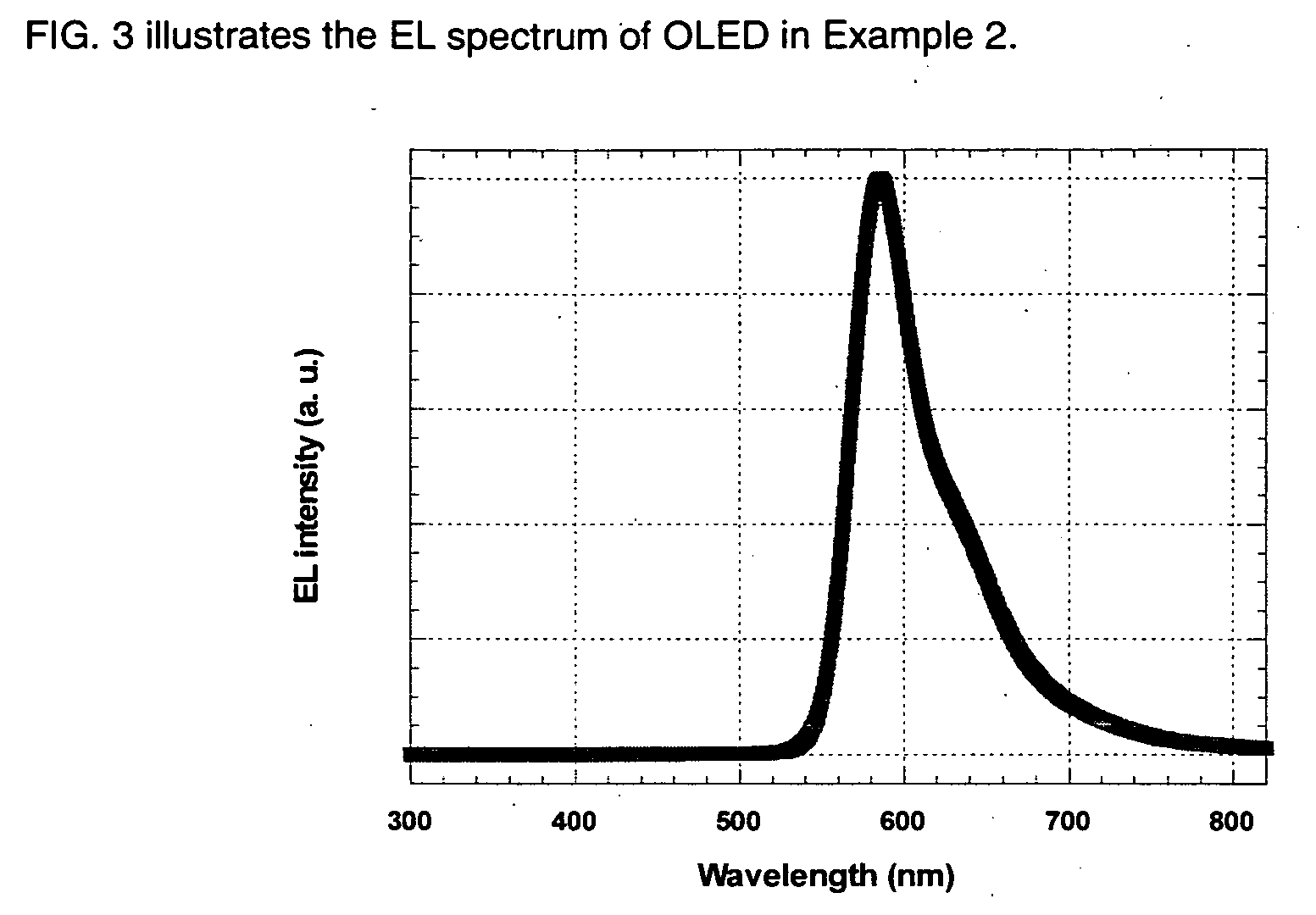Aqueous dispersions of polythienothiophenes with fluorinated ion exchange polymers as dopants
a technology of fluorinated ion exchange polymers and polythienothiophene, which is applied in the field of electrically conducting thienothiophene polymers in the water field, can solve the problems of corrosion within the device, low ph of conductive polymer dispersions synthesized with water soluble polymeric sulfonic acids, and reduced stress li
- Summary
- Abstract
- Description
- Claims
- Application Information
AI Technical Summary
Benefits of technology
Problems solved by technology
Method used
Image
Examples
example 1
Dispersion A
[0094] 0.0575 grams (0.111 mmol) of ferric sulfate hydrate (97%, Sigma-Aldrich Chemical Co) and 0.135 grams (0.515 mmol) potassium persulfate (99+%, Fisher Scientific Co.) were added to a 60 ml jacketed reaction flask with 44.53 g of deionized water. The system was mixed for 5 minutes until the solids were dissolved. 15.47 grams (1.406 meq) of 10% Nafion® dispersion in water (obtained from Aldrich Chemical Co.) was added to the reactor. The reactor is completely filled with the reaction mixture. The jacketed flask was adjusted to maintain a 16° C. reaction temperature. 0.0807 g (0.576 mmol) of thieno[3,4-b]thiophene was added to the reaction mixture. During the polymerization the contents of the reactor were well mixed to ensure a stable dispersion. The reaction mass quickly turned from light green to emerald green to opaque dark blue within 20 minutes. Polymerization was allowed to proceed for 4 hrs after the introduction of monomer. The reaction product was purified ...
example 2
[0107] A light emitting polymer solution of MEH-PPV (poly(2-methoxy, 5-(2′-ethyl-hexyloxy)-p-phenylene-vinylene), ADS130RE from American Dye Source, Inc. in Baie D'Urfe, Quebec, Canada) in toluene was prepared by dissolving 19.8 mg of MEH-PPV in 2.84 g of toluene on a hot plate at 60° C. for 2 hr, and then filtered with a 0.45 μm PVDF filter. The solution is hereafter referred as Solution A. The device obtained by this Example is illustrated in FIG. 2 but without the optional layer 140.
[0108] An indium tin oxide coated glass substrate (2.5×2.5×0.7 cm, surface resistance ˜12 Ω / square) was cleaned by ultrasonication sequentially in de-ionized water with detergent, de-ionized water, methanol, isopropanol, and acetone; each for 5 to 10 min. The ITO substrate was allowed to dry between different cleaning solvents. Then the ITO substrate was treated with oxygen plasma in an SPI Prep II plasma etcher for about 10 min. After that, the ITO substrate was spin coated with Dispersion B at 1500...
example 3
[0109] An OLED device was made the same way as in Example 2, using Dispersion C as the hole injection / transporting layer. Dispersion C was filtered with a 0.45 micron pore size PVDF filter before spin coating. A uniform film of PTT:Nafion with thickness of about 78 nm was obtained at spin rate of 1500 rpm. The structure of this device is illustrated in FIG. 2 without optional layer 140. The device reached 1 cd / m2 at about 2.1 V, with a maximum external quantum efficiency of 1.26%. At a current density of 100 mA / cm2, the device showed a brightness of 3,040 cd / m2. At a current density of 1000 mA / cm2, the brightness was 26,400 cd / m2. The performance results of operating a device obtained by this Example are shown in FIG. 4.
PUM
| Property | Measurement | Unit |
|---|---|---|
| Electric charge | aaaaa | aaaaa |
| Current density | aaaaa | aaaaa |
| Current density | aaaaa | aaaaa |
Abstract
Description
Claims
Application Information
 Login to View More
Login to View More - R&D
- Intellectual Property
- Life Sciences
- Materials
- Tech Scout
- Unparalleled Data Quality
- Higher Quality Content
- 60% Fewer Hallucinations
Browse by: Latest US Patents, China's latest patents, Technical Efficacy Thesaurus, Application Domain, Technology Topic, Popular Technical Reports.
© 2025 PatSnap. All rights reserved.Legal|Privacy policy|Modern Slavery Act Transparency Statement|Sitemap|About US| Contact US: help@patsnap.com



